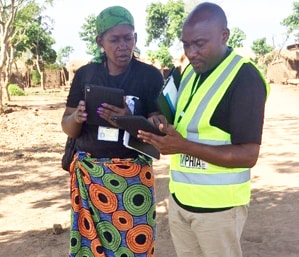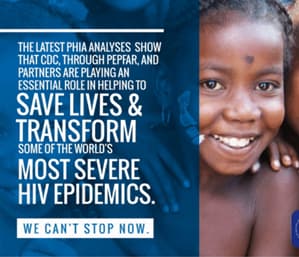Five African Countries Approaching Control of Their HIV Epidemics

The U.S. President’s Emergency Plan for AIDS Relief (PEPFAR), CDC, and ICAP at Columbia University released today new findings from Population-based HIV Impact Assessments (PHIA) showing significant progress against HIV epidemics. New results from Lesotho show the country’s HIV epidemic is coming under control, and add to recent PHIA findingspdf icon from four other African countries also demonstrating that these countries are approaching control of their epidemics.
Findings from Lesotho show high levels of viral suppression – reflecting effective treatment programs that reduce infections and save lives. In 2016, 67 percent of those living with HIV in Lesotho were virally suppressed. Modeled estimates show that new HIV infections would dramatically decline if 73 percent of all people living with HIV are virally suppressed by 2020. The PHIA results suggest that Lesotho is approaching this global target for viral load suppression.
These results add to PHIA findings from Swaziland, Malawi, Zimbabwe, and Zambia showing that global efforts are helping these highly-affected countries approach HIV epidemic control.
In addition, new PHIA findings from Uganda indicate that the country’s previously expanding epidemic has now stabilized. The PHIA results also show that in Uganda, nearly 60 percent of people with HIV had achieved viral suppression in 2016.
None of these achievements would be possible without the political will and leadership to focus resources for maximum impact in each of these countries.
While the PHIA results demonstrate tremendous progress against HIV epidemics by achieving high coverage particularly among women and older people, we can only truly control these epidemics by achieving higher results among men and youth as well. In all six surveys, HIV-positive men under age 35 and younger women were less likely to know their HIV status, be on HIV treatment, or be virally suppressed than older adults.
PHIAs are national surveys – implemented under the leadership of Ministries of Health and by PEPFARexternal icon, CDC, and ICAP at Columbia Universityexternal icon – that directly measure progress toward global targetspdf icon to control the HIV epidemic. CDC is lending expertise in epidemiology, laboratory science, and data analysis to help partners design and implement the surveys, and rapidly harness the results for program improvement.
CDC’s efforts through PEPFAR and with global partners are not only helping to change the course of the epidemic, but are also contributing to the long-term stability of other nations, which makes the world a safer place for all of us.
Leadership Statement: CDC’s Director discusses how global efforts are contributing to these latest results showing progress toward HIV epidemic control demonstrated by these PHIA results
Translating Data into Action:
PHIA survey findings are already helping countries focus resources on urgent program priorities
In Uganda, PHIA results are helping the government refine its initiative to end HIV by 2030, using data to inform male-friendly strategies like offering test and treat services in places where men can more easily be reached.
In Malawi, PHIA results have prompted country leadership to focus financial and human resources on the five highest burden districts to maximize the impact on the epidemic.
In each of the countries where surveys are conducted, PHIA findings will help inform future programs to confront the global epidemic for maximal impact, allowing us to save lives and costs into the future.
Read More and Share about how CDC, through PEPFAR, is supporting countries to respond to their HIV epidemics and helping implement PHIA surveys.



